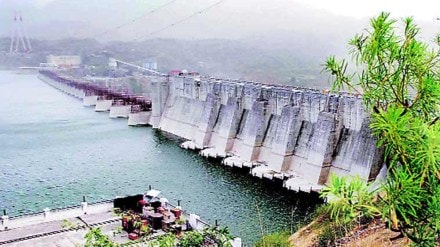Deficient monsoon rains in the southern peninsula have pulled down water levels in India’s key reservoirs to 15% below the last year’s record-high level on Thursday despite a sharp spike in reservoirs level in northern regions. A week ago, overall water levels in the 146 reservoirs were only 4% below the year-ago level. Water levels at the 40 reservoirs in southern regions have remained 30% below the last year’s level mainly because of deficient rainfall so far in Karnataka, Kerala, Tamil Nadu, Andhra Pradesh and Telangana.
According to the Central Water Commission (CWC), water level of the country’s reservoirs stood at 59.50 billion cubic meters (bcm) on Thursday, which is 33% of their combined capacity.
A year ago, the water available in these reservoirs was 69.72 bcm, and the average of the last 10 years was 53.90 bcm. “Current water level of reservoirs was 85% of the live storage of the corresponding period of last year and 110% of storage of the average of the last 10 years,” the CWC stated.
Currently, 49 reservoirs have more water than last year and 68 dams have more water than average of last decade.
“The number of reservoirs having storage equal to last year is 10 and having storage less than last ten year average is 8,” according to CWC statement. The number of reservoirs having storage less than last year are 35 and having storage less than last 10 years are 24.
Water levels in major dams in eastern regions especially in West Bengal, Bihar, Jharkhand and Odisha, have been up 1% above last year’s level however 6% less that last 10 year-average level. In these states, a large segment of the crop area is still rainfed.
West Bengal, the biggest rice producing state in the country, has irrigation coverage of only 51%, which may be impacted if monsoon rains become deficient.
Because of surplus rainfall in north-western states, 10 reservoirs of Himachal Pradesh, Punjab and Rajasthan have 38% more rainfall than last year and 29% above the average of last decade.
According to India Meteorological Department (IMD), overall monsoon rains have been 1% above the benchmark long period average (LPA) till Thursday. Rainfall in the southern peninsula is 22% below the LPA so far. On July 1, the deficiency in overall rainfall was 9% of benchmark. Rainfall between 96-104% of the LPA is considered “normal”.
This comes after India, as a whole, received “below normal” rainfall of 148.6 millimetre (mm) in June, against the LPA of 165.3 mm, a deficit of 10%.
